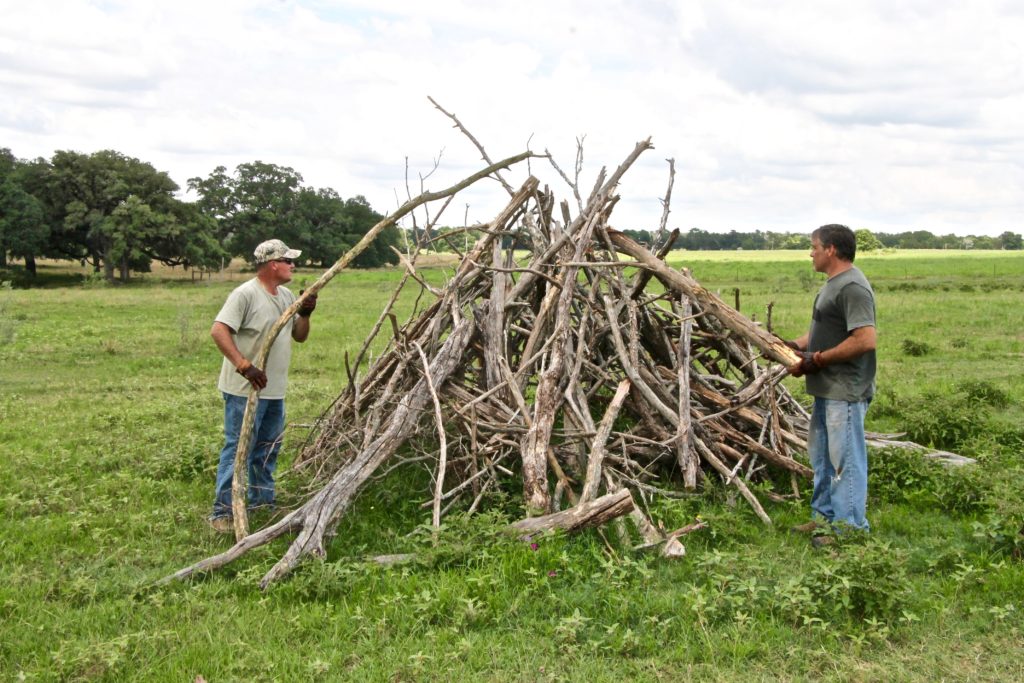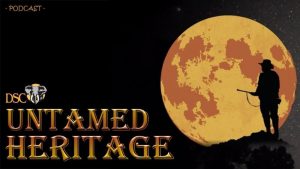Habitat Brush Piles
[author] [author_image timthumb=’on’]https://www.biggame.org/wp-content/uploads/2019/10/untamed.png[/author_image] [author_info]Larry Weishuhn is a widely known writer, speaker, raconteur and world hunter. He co-hosts “DSC’s Trailing the Hunter’s Moon” on Pursuit Channel, CarbonTV and the show’s YouTube Channel.[/author_info] [/author]
With my Ruger No. 1 RSI in .257 Roberts, topped with a Trijicon Huron scope, shooting Hornady 117 grain SST properly sighted in, it was time to get back to work. We, my two sons-in-law and I, returned to cutting cedar trees that died during a severe drought several years ago. The trunks would be used in building a log shooting house for our range, the limbs to be used to create brush piles to help encourage wildlife habitat recovery.
Before stacking dead cedar limbs in the form of a teepee, we planted acorns, pecan and persimmon seeds in what would be the pile’s center. Stacked limbs will provide protection to developing seedlings from being browsed on by both livestock and wildlife, at least until they grow to be sizeable and their limbs spread beyond “the teepee”.

These brush piles will provide cover for rabbits and ground-nesting birds, too. They will provide roosting sites for a wide variety of non-game birds, including the birds that have been eating a wide variety of grass, forbs, shrub and tree seeds to pass through the bird’s digestive system and be dropped to the ground. These passed-through seeds tend to have increased germination rates. The “deposited” seeds should grow quickly under the cover of the stacked limbs. I have often seen this happen in the past habitat brush piles I have built.
In most of the areas where we have piles, we graze cattle, both cow/calf. These piles prevent cows from feeding on the seedling that develop under the pile. Our habitat brush piles are built to ensure there is sufficient room for growth under them, 8 to 12-feet in diameter. We build 4 or more structures per acre, depending upon our source for limbs.
Building these types of brush piles can truly help improve the wildlife habitat on your property regardless of size.
 Regardless of what is going on in the world, there are always small things, of beauty and splendor, for us to enjoy, admire and appreciate!
Regardless of what is going on in the world, there are always small things, of beauty and splendor, for us to enjoy, admire and appreciate!
Watch “DSC’s Trailing the Hunter’s Moon” TV show on our YouTube Channel, or on CarbonTV.
If you haven’t heard any of the “DSC’s Untamed Heritage” podcasts, visit blubrry.com/untamedheritage/ to listen to one of our 30 podcast episodes.



